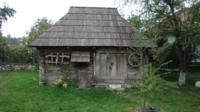Discovering Romania 2 days Private Tour from Bucharest
Bucharest, Romania
Trip Type: Overnight Tours
Duration: 2 days
This is one of the most inspiring journeys in Romania. In two days, you will see Vlad Tepes' court in Targoviste, some of the most beautiful monasteries in Romania, Targu Jiu - Brancusi's Art City, and the birth village of communist dictator Nicolae Ceausescu.
More About This Activity All Overnight Tours →
This is one of the most inspiring journeys in Romania. In two days, you will see Vlad Tepes' court in Targoviste, some of the most beautiful monasteries in Romania, Targu Jiu - Brancusi's Art City, and the birth village of communist dictator Nicolae Ceausescu.
Day 1: Depart at 8 o'clock from Bucharest. Visits to the Princely Court and Church of Vlad Tepes in Targoviste, Curtea de Arges Monastery, Corbii de Piatra (Stone Ravens) Monastery, Pitesti, Ramnicu Valcea. Arrival and accomodation at Ranca (10 hours).
Day 2: Depart at 9 o'clock from Ranca. Visits to Constantin Brancusi World War I monuments in Targu Jiu, Brancusi Memorial House in Hobita, Scornicesti – the ex-communist leader Nicolae Ceausescu’s birth village, arrival in Bucharest. (9 hours).
Vlad Tepes in Victor Hugo’s “Légende des Siècles”
Romanians have a great deal of respect for Prince Vlad Tepes – The Impaler (known in Western Europe as Count Dracula), for he was a great ruler and a fearless fighter against the Ottoman threat. Vlad Tepes was famous for his cruelty against the Ottomans, and for his keen sense of justice. He is remembered as the ruler in whose time one wasn’t afraid of being robbed in the street, considering that the Middle Age was a dangerous era for travelers. According to Romanian chronicles, during Vlad Tepes’ reign, thieves were impaled to on stakes if they were caught. Thus, according to a Romanian legend, one golden cup was left at the fountain at Targoviste Princely Court for the thirsty travelers to drink; no one dared to take it away. The cup disappeared several years later, after Vlad Tepes’ death.
In his “Légende des Siècles”, Victor Hugo describes how Vlad Tepes won the battle against Sultan Mahomed ‘s army , who came to conquer Wallachia. On their way to Targoviste, the capital of Wallachia, the Ottomans were shocked by the view of burning houses and fields. Furthermore, the water in the fountains was poisoned and no food could be found. When they arrived near Targoviste, a grotesque image unfolded in front of them: twenty thousand dead Ottoman prisoners were impaled on stakes , in the field surrounding the fortress. Scared and horrified by the cruelty of the Romanian Prince, the Ottoman officers decided to retreat and let Vlad Tepes win the battle, that did not even take place.
Day 2: Depart at 9 o'clock from Ranca. Visits to Constantin Brancusi World War I monuments in Targu Jiu, Brancusi Memorial House in Hobita, Scornicesti – the ex-communist leader Nicolae Ceausescu’s birth village, arrival in Bucharest. (9 hours).
Vlad Tepes in Victor Hugo’s “Légende des Siècles”
Romanians have a great deal of respect for Prince Vlad Tepes – The Impaler (known in Western Europe as Count Dracula), for he was a great ruler and a fearless fighter against the Ottoman threat. Vlad Tepes was famous for his cruelty against the Ottomans, and for his keen sense of justice. He is remembered as the ruler in whose time one wasn’t afraid of being robbed in the street, considering that the Middle Age was a dangerous era for travelers. According to Romanian chronicles, during Vlad Tepes’ reign, thieves were impaled to on stakes if they were caught. Thus, according to a Romanian legend, one golden cup was left at the fountain at Targoviste Princely Court for the thirsty travelers to drink; no one dared to take it away. The cup disappeared several years later, after Vlad Tepes’ death.
In his “Légende des Siècles”, Victor Hugo describes how Vlad Tepes won the battle against Sultan Mahomed ‘s army , who came to conquer Wallachia. On their way to Targoviste, the capital of Wallachia, the Ottomans were shocked by the view of burning houses and fields. Furthermore, the water in the fountains was poisoned and no food could be found. When they arrived near Targoviste, a grotesque image unfolded in front of them: twenty thousand dead Ottoman prisoners were impaled on stakes , in the field surrounding the fortress. Scared and horrified by the cruelty of the Romanian Prince, the Ottoman officers decided to retreat and let Vlad Tepes win the battle, that did not even take place.
« Go Back

